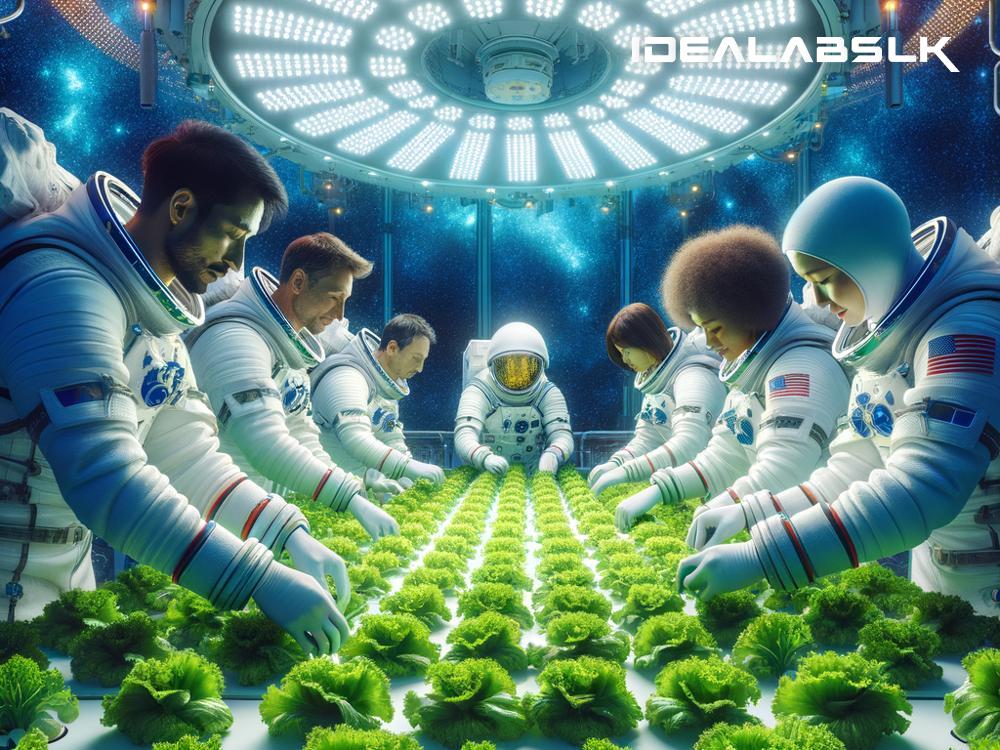The Potential of Space Farming: How Growing Food in Space Will Support Human Colonies by 2025
Imagine living on a spaceship or a distant planet, far away from Earth. What would you miss the most? For many of us, the answer would be the taste of fresh fruits and vegetables. As thrilling as space travel sounds, the thought of munching on packaged food for years doesn't seem very appetizing. But what if we could grow our food in space? This is where the exciting concept of space farming comes into play. By 2025, growing food in space might not be just a sci-fi dream but a reality that could support human colonies far beyond Earth.
The Basics of Space Farming
Space farming is essentially what it sounds like - cultivating plants in space. However, it's a bit more complicated than planting seeds in your backyard garden. In the weightlessness of space, everything floats, including water and soil, making traditional farming methods impossible. So, space farming requires innovative techniques and technologies, like hydroponics (growing plants in a water-nutrient solution) and aeroponics (growing plants in an air-mist environment), to grow food without soil.
Why is Space Farming Important?
As we aim for longer space missions and even plan to establish colonies on the Moon or Mars, carrying enough food from Earth becomes impractical. Space farming offers a sustainable solution, providing fresh produce for astronauts and future space settlers. It's not just about the physical nourishment; growing and consuming fresh food can also boost the morale and mental health of space travelers, creating a more Earth-like living environment millions of miles away from home.
The Challenges of Space Farming
Space farming faces several challenges, from the lack of gravity to the limited availability of water and sunlight. Scientists are working on overcoming these obstacles by developing special farming modules and using artificial lighting to simulate sunlight. Managing water in zero gravity is particularly tricky, but innovative irrigation systems in space greenhouses could ensure plants get just the right amount of moisture they need to thrive.
The Progress So Far
We've already seen promising developments in space farming. Astronauts aboard the International Space Station (ISS) have successfully grown and eaten a variety of vegetables, including lettuce, radishes, and zinnias. These experiments not only prove that space farming is possible but also help researchers understand how plants grow in microgravity and how to optimize conditions for higher yields.
The Future of Space Farming by 2025
Looking ahead, the potential of space farming by 2025 is truly exciting. We're likely to see more advanced space greenhouses, capable of growing a wider variety of crops, including fruits, vegetables, and even grains. These space farms will not only supply fresh food but also play a crucial role in life support systems by producing oxygen and purifying water through plant transpiration.
Companies and space agencies around the world are investing in research and development to make space farming more efficient and sustainable. By 2025, we might witness the first fully functional space farms, supporting long-duration missions and laying the groundwork for future human colonies on the Moon, Mars, and beyond.
Space Farming: More Than Just Food
Beyond providing food, space farming could revolutionize the way we approach agriculture back on Earth. The technologies developed for growing crops in the harsh conditions of space could offer solutions to agricultural challenges caused by climate change, soil degradation, and water scarcity. Space farming techniques could lead to more sustainable and resilient farming practices, benefiting not just astronauts but everyone on our planet.
Conclusion
The idea of space farming, once a mere fantasy, is rapidly becoming a tangible reality. By 2025, it holds the promise of supporting human colonies in space, making the dream of living beyond Earth more feasible and sustainable. As we venture further into the cosmos, space farming will be at the forefront of ensuring that we can grow food wherever humanity decides to go next. This journey of agricultural innovation is not just about survival in space; it's about improving life on Earth and expanding the possibilities for future generations in the vast expanse of space.

